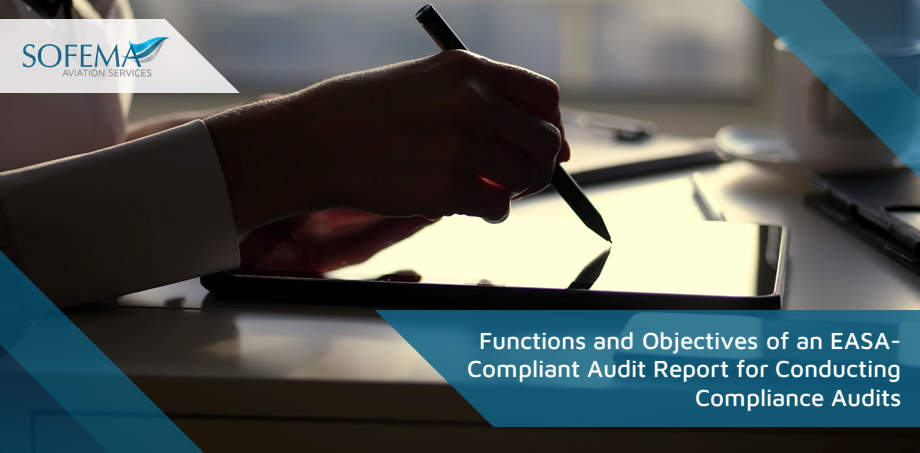Sofema Aviation Services (SAS) www.sassofia.com considers the key features when creating a compliant audit report.
Introduction
An EASA-compliant audit report should be concise yet comprehensive, capturing the essence of the audit without delving into excessive detail, as detailed findings are covered in the attached Discrepancy Report.
In essence, the EASA-compliant audit for Air Navigation Services is pivotal in assuring the safety and efficiency of aviation operations by providing a structured and systematic approach to evaluating ANS providers against EASA standards.
The audit report serves as a formal record, showcasing evidence of compliance or non-compliance with EASA standards. The report acts as a reference point for tracking the resolution of identified discrepancies and monitoring the effectiveness of corrective actions.
An EASA-compliant audit report should include the following elements:
- Title: Clearly state that the document is an “Audit Report”.
- Purpose of the Audit Report: A brief statement explaining the objective of the report, which is to provide information within the auditor’s quality system regarding the accomplishment of the audit.
- Auditee Information: it’s essential to mention the auditee’s name, location, and other relevant details for clarity.
- Audit Elements Overview: A summary or list of the main elements or areas that were audited. This provides a snapshot of the scope of the audit.
- Interviewees: A list of all individuals who were interviewed during the audit. This should include their names, titles, and roles within the organization. If possible, photocopies of their business cards should be attached.
Audit Standard Identification:
- Purpose of the Audit: Clearly state why the audit was conducted. This could be for routine checks, following up on previous findings, or any other specific reasons.
- Standard Reference: Specify against which standard the audit is being performed. This could be a specific EASA regulation, an internal company standard, or any other relevant benchmark.
- Discrepancy Report Attachment: Mention that a detailed Discrepancy Report is attached, which contains in-depth findings from the audit. This ensures that the reader knows there’s a separate document for detailed discrepancies.
- Concerns for Future Reference: Highlight any potential issues or concerns that were observed but were not significant enough to be raised as findings in the Discrepancy Report. This section is crucial for proactive risk management and future planning.
Conclusion/Summary:
- A summary of the overall audit, including any general observations or recommendations.
- Attachments and Annexures: List out any attached documents or annexures, such as the Discrepancy Report, business card photocopies, or any other relevant documentation.
- Report Approval: Include a section for the auditor’s signature, date, and any other relevant approval details to validate the report.
Next Steps
Follow this link to our Library to find & download related documents for Free.
Please see the following course EASA Quality Assurance Auditing Introduction for Air Navigation Services (ANS) – 3 Days
Visit our websites www.sassofia.com and www.sofemaonline.com or email team@sassofia.com
Tags:
Compliant Audit Report, Discrepancy Report, EASA, EASA Air Navigation Services (ANS), EASA Quality Assurance Auditing, EASA-Compliant Auditing, SAS blogs




